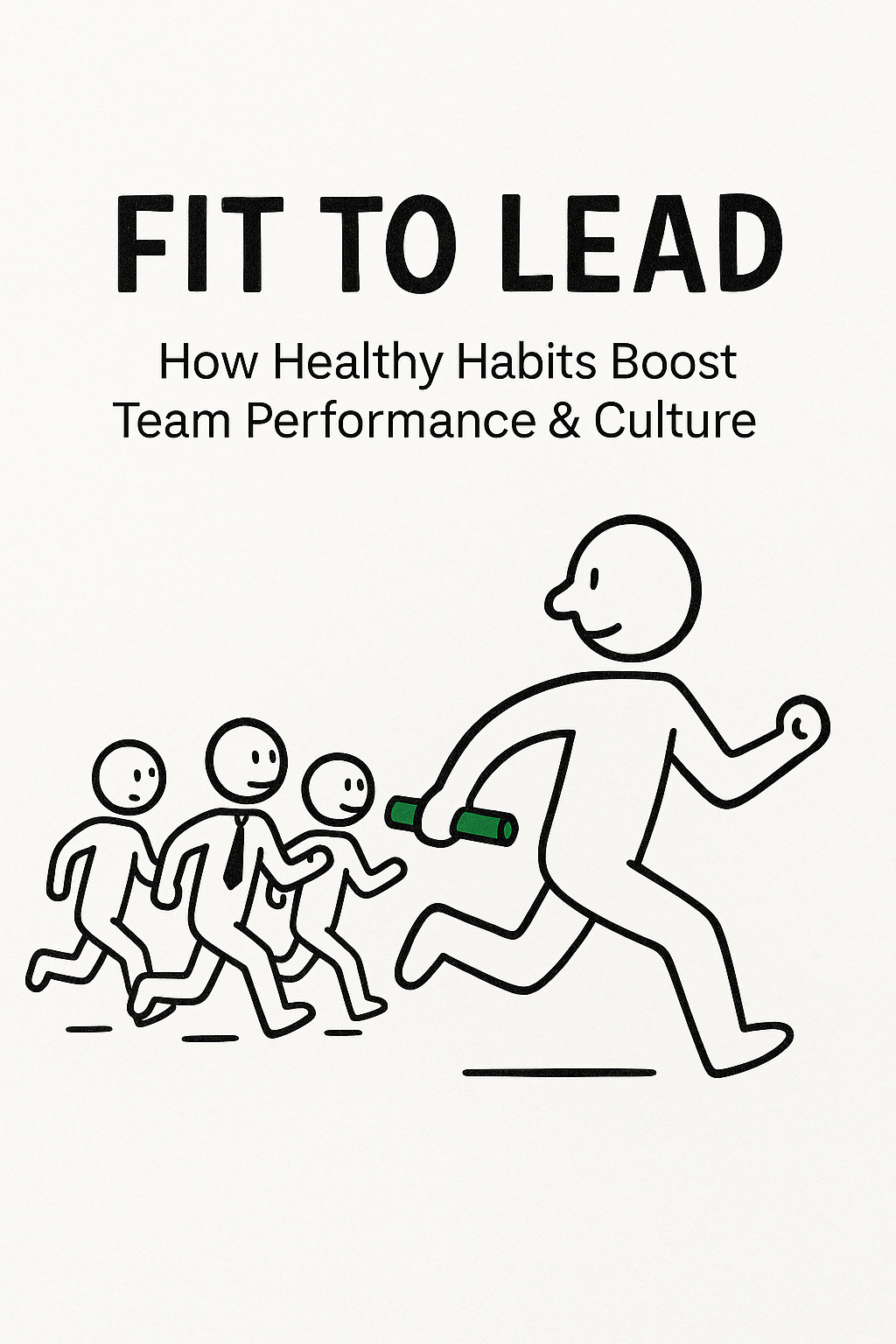Fit to Lead: How Your Healthy Habits Boost Team Performance and Culture
Learn how leaders who make fitness and well-being a priority inspire high-performing teams, foster resilient cultures, and gain a workplace advantage. Wellness is essential leadership, not a luxury.
Recently, I’ve been binging the new Netflix fitness reality series Final Draft. What got me hooked wasn’t just the sweat and competition, but the mindset. These so-called “retired” athletes weren’t done, they were still sharpening themselves, proving that growth never stops.
Leadership is no different. Just as athletes train to stay sharp, leaders need constant conditioning not only to keep themselves resilient but to set the pace for everyone around them. Leaders are the athletes of organisational culture. When they model discipline, balance, and care for their own well-being, they create a ripple effect.
If a growth mindset pushes athletes to peak, it also drives teams to thrive.
The truth is, healthy leaders don’t just live longer; they lead stronger.
And in today’s workplace, that strength shows up not only in performance metrics, but in morale, engagement, and the culture that either powers, or poisons your organization.
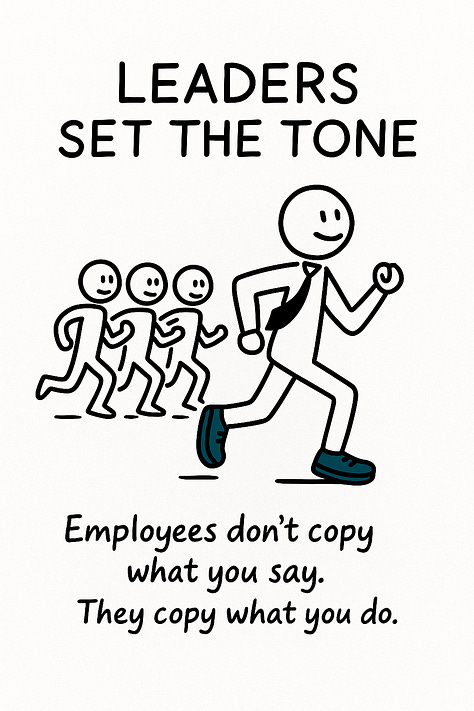
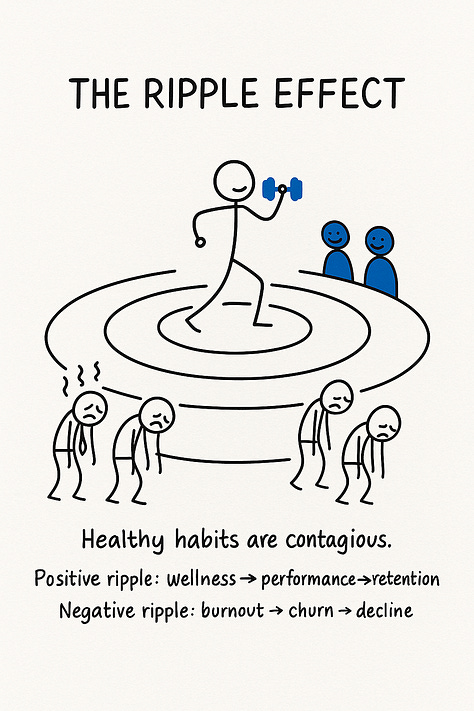
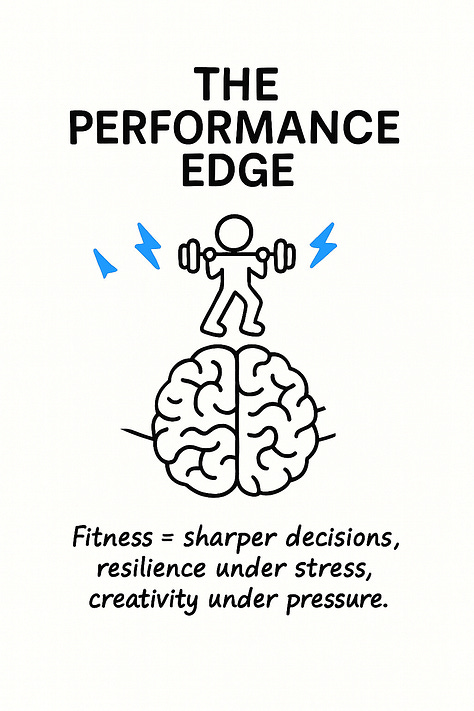
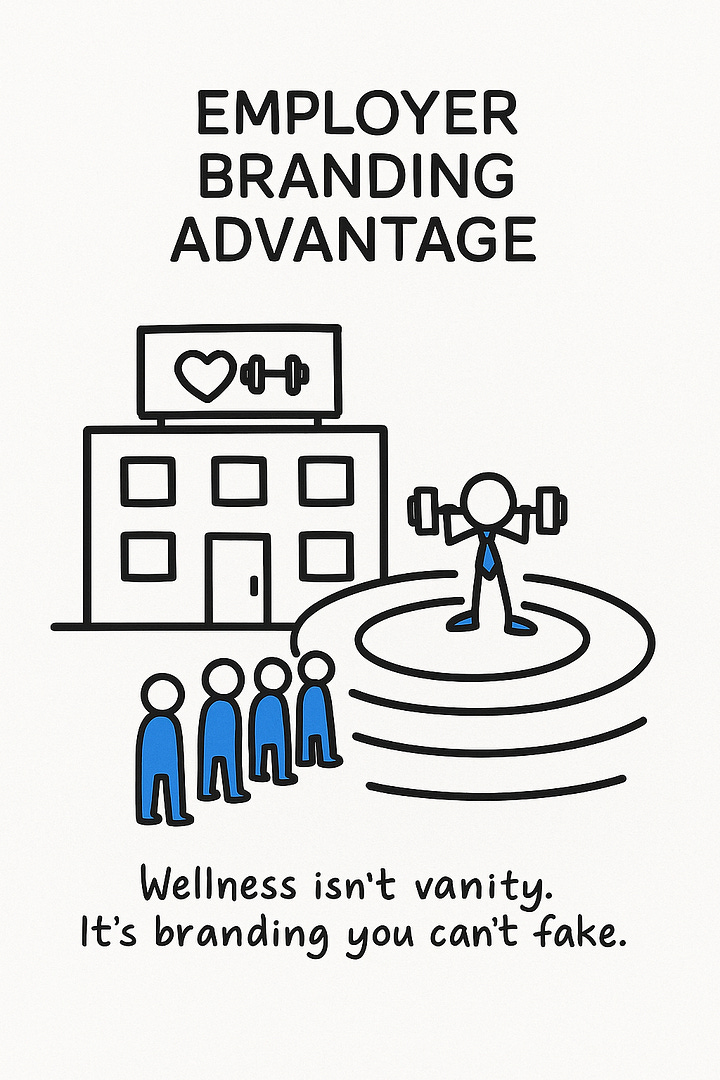
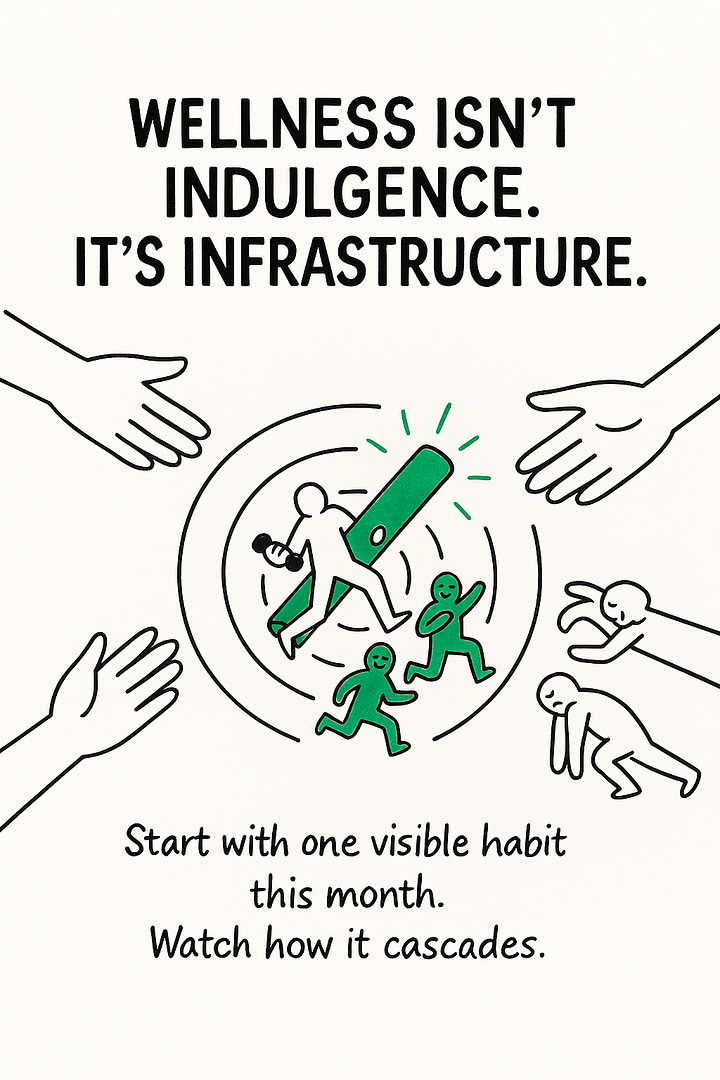
1. Leaders Set the Tone
There’s a phrase in leadership studies called the shadow of the leader. Put simply: people don’t do what you say, they do what you do. Employees watch, emulate, and internalise leadership behaviour, often without realising it.
That’s why fitness isn’t just a personal flex; it’s cultural signalling. A CEO who makes space for their morning run or respects sane work hours sends a message that health matters as much as hustle. According to The CEO Magazine, companies led by health-conscious executives report lower absenteeism, higher morale, and improved productivity.
Look at Satya Nadella at Microsoft. By openly talking about empathy, balance, and well-being, he didn’t just change strategy, he reshaped culture. His leadership showed that caring for yourself isn’t a weakness; it’s leverage.
2. The Wellness Ripple Effect
Healthy habits are contagious. When leaders leave at 6 p.m. to have dinner with family, mention their morning swim, or take vacations without guilt, they create permission structures. Employees feel they can do the same, and the organization benefits.
The ripple effect is powerful:
Positive: wellness → sustainable performance → retention → stronger employer brand.
Negative: glorifying burnout → presenteeism → churn → declining brand.
Put bluntly, “Your Fitbit is also your culture scorecard.”
3. The Performance Edge
The benefits of fitness aren’t just visible on your waistline; they show up in boardrooms and crisis meetings. Physical health fuels sharper decision-making, resilience under stress, and creativity under pressure.
Fitness also builds delayed gratification: the ability to do hard things today for a payoff tomorrow. That’s the essence of both leadership and training. Like athletes, leaders must optimise recovery, nutrition, and cycles of peak performance.
Harvard Business Review has found that executives who exercise regularly are more effective under pressure. The gym isn’t stealing your time; it’s buying you better judgment.
4. Employer Branding & Talent Magnet
Today’s talent doesn’t just screen for salary packages, they screen for values. They’re asking: Do I want to live the lifestyle this company promotes?
A visible culture of wellness becomes a competitive advantage in recruitment and retention. It signals care, sustainability, and human-first leadership.
Patagonia is a prime case study: its leaders live their wellness values, from surfing breaks to time outdoors, which has made the company a magnet for purpose-driven talent.
In other words: wellness is branding, and it’s the kind that can’t be faked.
5. Actionable Framework for Leaders: Leading by Healthy Example
Here’s the kicker: you don’t need to run ultramarathons to make an impact. It’s the small, visible behaviours that scale across a culture.
Share your routines (without preaching): Let people know you block mornings for a workout or meditation.
Normalise boundaries: Leaving work on time is leadership, not laziness.
Encourage team wellness: Walkathons, step challenges, or simply suggesting “walking meetings” shift norms.
Model recovery: Take vacations. Sleep. Show that rest is productive.
Frame wellness as service: By caring for yourself, you’re building the capacity to care for your team.
This isn’t vanity leadership, it’s servant leadership. Because when you sharpen yourself, you sharpen everyone around you.
Final Thoughts
Leadership isn’t a sprint or even a marathon, it’s a relay. And the baton you pass isn’t just quarterly results or project milestones; it’s culture.
Every choice you make about your own health sets the pace for your team’s well-being and, ultimately, their performance.
The big idea here is simple but profound:
Wellness isn’t indulgence, it’s infrastructure.
The future of leadership won’t be defined only by strategic IQ or emotional EQ, but by physical resilience. Leaders who can endure, recover, and model balance will outlast those who burn bright and burn out.
So, reflect for a moment: what signal are your daily habits sending to your team?
Start small, pick one visible wellness habit this month, whether it’s leaving work on time twice a week, blocking off a morning workout, or taking your vacation days without apology. Watch how quickly it cascades.
Because when you’re fit to lead, your team isn’t just healthier, they’re stronger, more engaged, and ready to carry the baton further than you ever could alone.

